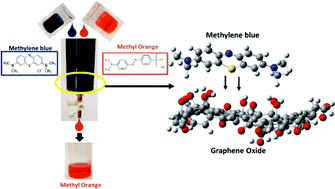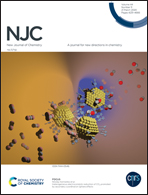Efficient dye removal and separation based on graphene oxide nanomaterials†
Abstract
In the present study, graphene oxide (GO), fluorinated graphene oxide (F-GO) and interconnected reduced graphene oxide (IC-rGO) were synthesized and systemically investigated for the removal of two cationic dyes, methylene blue (MB) and rhodamine B (RhB), from aqueous solution. The surface morphology of the adsorbents was characterized by scanning electron microscopy (SEM) and transmission electron microscopy (TEM). The effect of the initial concentrations of MB and RhB was examined, and the experimental data was fitted using the Langmuir and Freundlich isotherm models. The Langmuir model was shown to be the better model; and the adsorption of MB and RhB was found to be most favorable on GO with a maximum adsorption capacity of 403.3 mg g−1 and 686.6 mg g−1. The adsorption kinetics study was also conducted and the resulting data fitted well with a pseudo-second-order kinetic model. The chemical compositions of the adsorbents before and after adsorption were analyzed using FT-IR and Raman spectroscopy to further understand the interaction between the dye molecules and adsorbents. Our study has demonstrated that GO is a very promising adsorbent for wastewater treatment and that GO can effectively separate cationic species from anionic compounds.



 Please wait while we load your content...
Please wait while we load your content...